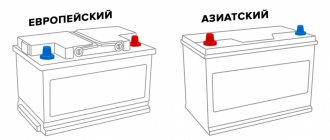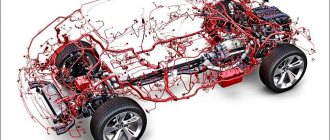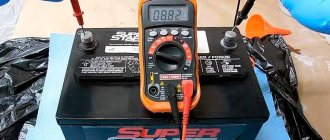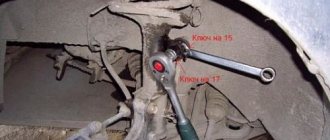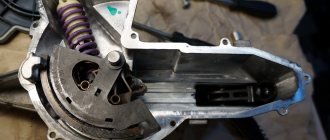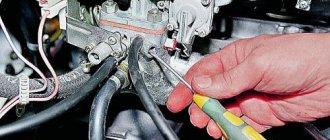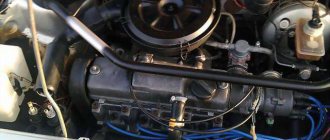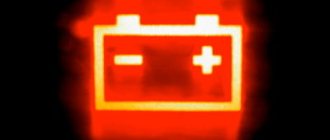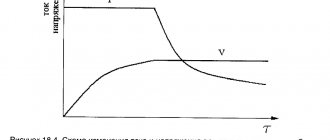Previously, constantly adding distilled water, periodically adding electrolyte, checking the level and density of the electrolyte were natural tasks facing motorists.
This had to be done in order to keep the battery in good working order. That is, the service was in full swing.
But time passes, technologies improve. Nowadays, most batteries offered on the market are of the maintenance-free type. And here the question arises, why then talk about working with such batteries if there is no need to maintain them.
In reality, everything is not quite like that. In theory, as the developers intended, through the use of a new design and technology, it was possible to get rid of the problem of active evaporation of water from the electrolyte composition. The liquid level remains virtually unchanged throughout the entire service life. But the degree of charge is constantly falling and growing. Moreover, under certain conditions, the generator does not have time to replenish the lost capacity, and the battery has to be charged with special equipment.
It is the charging of maintenance-free batteries that is the very point that allows such batteries to be called low-maintenance. Although such a concept does not officially exist.
Advantages and disadvantages
To take an objective look at maintenance-free car batteries, it is worth studying their advantages and disadvantages.
Everyone knows and can imagine classic batteries with liquid electrolyte and plugs for access to the banks. When working with them, drivers have to check the electrolyte level and measure its density. It is also necessary to add distilled water; less often, a fresh portion of the finished electrolyte is added.
The downside here is that it was quite easy to get burned by acid if you did not follow basic safety precautions.
It would seem that, looking at maintenance-free batteries and studying their advantages and disadvantages, the strengths should significantly outweigh the weaknesses.
Maintenance-free batteries are batteries that do not have access to banks (sections) in the form of special covers. Their body is completely sealed.
This makes it clear what a maintenance-free car battery means. But it is not entirely clear what its advantages and disadvantages are.
The advantages include the following factors:
- long-term retention of accumulated charge;
- improved plates;
- sealed housing;
- the presence of special valves to relieve excess pressure;
- minimal volatility of the working fluid;
- increased service life;
- adaptability to the requirements of modern cars.
It cannot be said that the service life of the maintenance-free battery in question will be significantly longer than that of an open-type car battery. It all depends on the quality of the battery, as well as on compliance with the rules of operation and maintenance.
Although design features and the almost complete absence of water evaporation allow manufacturers to set a longer service life indicated on the body.
It is difficult to single out any obvious shortcomings here. The fact that banks cannot be accessed is very controversial. This is often simply not necessary. There is no need to add water. Some people open the case and then restore it by soldering. But this is an extreme measure and is not recommended.
The cost can also be considered a disadvantage. For objective reasons, maintenance-free batteries are more expensive than their serviced counterparts. But again, the price increase is due to the corresponding advantages and superiority of the new technology.
Everyone can now draw their own conclusions and decide whether it is worth switching to maintenance-free batteries, or remaining faithful to the good old serviced batteries.
What happens if you recharge
Many people think that when overcharging a maintenance-free battery, the battery may simply explode. This is a misconception. Yes, the electrolyte in any battery boils when recharging. In a serviced battery, the cans are open; this process is not dangerous in any way, since its density can be replenished. When charging a maintenance-free battery, this option is absent and when the conductive liquid in the battery boils, a valve opens to relieve excess pressure.
Advice! It is recommended to charge a maintenance-free battery only for the minimum amount of time required to replenish the charge. It’s better to undercharge a little than to damage the battery irrevocably.
This helps eliminate the danger of explosion and damage to the housing. But in this case, the battery will lose part of its capacity or even fail. Some of the water from the electrolyte solution will boil away, its density will no longer correspond to the optimal mode of accumulation and release of charge. But it will not be possible to adjust the electrolyte, since the battery does not have plugs.
Why do they need to be charged?
Now to the question of whether it is actually possible to charge maintenance-free batteries, why and when such a need arises.
Under ideal conditions, such batteries do not need to be charged. In theory, when the battery gives its charge to the starter and helps start the engine, the generator turns on. It powers all consumers of the on-board network, and the battery also becomes one of them. That is, now the battery takes energy from the generator. Due to this, it is possible to compensate for the losses that the battery incurred when starting the engine.
In reality, everything is somewhat different. Very often the generator does not have enough time to replenish the charge in the battery.
This is influenced by several factors.
- Terms of Use. Most motorists operate their cars in approximately the same way. This is city driving, when a distance of more than 100 km is rarely covered per day. Moreover, trips are accompanied by frequent stops and repeated starts of the engine. In order for the battery to be charged from the generator, you need to drive about 40–50 km without stopping at medium speeds. In winter, the distance increases to 80–100 km. If this condition is not met, the battery will not be fully charged. Subsequent starts and small recharges will lead to the battery being completely drained. You have to use the charger.
- Malfunction of the generator and its components. The generator may produce too much charge current, or insufficient. Most often the fault lies with the relay regulator. Using this device, the necessary stable voltage is supplied from the generator to the battery. If this condition is not met, undercharging may occur.
- Weather. Heat has a detrimental effect on the condition of the battery. But the discharge intensifies precisely at negative temperatures. This helps speed up self-discharge. Often, after parking overnight in winter, the car simply won’t start in the morning.
For maintenance-free batteries, a complete discharge is unacceptable, since it will be almost impossible to restore the battery after this.
If it were a serviceable battery, it would be possible to fill it with electrolyte of the required density, let the battery stand, and the chances of resuscitation would increase. Everything is different here. There is no access to sections.
Because of this, you have to carefully monitor the charge level to prevent a deep discharge. Many motorists, knowing this feature, make it a rule to carry out preventative charging 1-2 times a month. Some do this less often, some more often. It all depends on the condition of the power source and operating conditions.
Maintenance-free batteries
First of all, we need to put aside the controversy and answer the question: “Is it possible to charge a maintenance-free battery?” The answer is unequivocal - yes. And charging the battery is not only possible, but also necessary! Charging is a direct necessity, especially before the onset of frost.
But it is necessary to properly charge a maintenance-free battery, otherwise it may become unusable - you need to choose the right charger, set the charge, and determine when it will charge.
How to charge
Now to the question of how to properly charge your maintenance-free battery.
There are 2 methods in total. This is charging with constant current or constant voltage.
In both cases, you can charge a dead, maintenance-free battery at home using direct current or voltage.
Each option should be considered separately.
Direct current
First, it’s worth talking about how to properly charge maintenance-free batteries using the direct current method.
It is recommended to use this method if the battery is severely discharged.
The disadvantage of this method is its duration. Otherwise, this allows you to compensate for the lost charge and return the battery to its functionality.
To charge your maintenance-free battery with the most common charger, you will have to carefully monitor all parameters. Therefore, it is better to use automatic memory.
The process itself looks like this:
- At the first stage, you need to select a current with a nominal value of 10% of the battery capacity. If the battery is 70 Ah, then the charging current will be 7 A.
- At this current, you need to charge the battery until about 14.4 V is displayed on the terminals when measuring the voltage.
- When the voltage reaches 14.4 V, the electrolysis process will begin in the electrolyte. That is, water will decompose into hydrogen and oxygen. This release of gases is dangerous for the sealed housing. It is important to reduce the charge current by 2 times to reduce the intensity of seething. The current is reduced to 3.5 A.
- At the third stage, the voltage will already be 15 V. At this moment, the current should be reduced by another 2 times. That is, up to approximately 1.75–2 Amperes.
- Then check the voltage and current at 10-15 minute intervals. If they remain unchanged, charging has ended.
Every driver can recharge any maintenance-free battery from his car at home using this method.
Constant voltage
Also, at home, a maintenance-free, dead battery is often charged from a car using the constant voltage method.
When charging, the voltage is set at 14.4 V. But it is better to compare the charging voltage with the type of battery used.
Here are some examples:
- antimony batteries are charged with a voltage of 14.4–14.6 V;
- for silver ones it is 14.7–15.5 V;
- for calcium, 15.6–16.2 V is relevant;
- EFB charges at 14.5–15 V;
- if it is AGM, then 14.2–14.8 V;
- GEL requires 13.8 to 14.4 V.
Having set the required voltage, you need to monitor the gradually falling current. When the values drop to approximately 200 mA, charging is complete.
Charging device
Can standard chargers be used or do they need to be purchased separately? There are no restrictions on this criterion, and you can charge a maintenance-free battery with any chargers.
Battery charger
Charger models used when charging low-maintenance batteries are fully suitable. It is recommended to use voltage controlled equipment.
There are devices called automatic charging stations - they themselves select the current values and the correct charging method. Using devices of this type, there is no need to monitor the charging process, and the battery will never boil - when fully charged, minimal currents are supplied, or the device turns off.
Checking the electrolyte level
As for how maintenance-free batteries can be serviced, it is worth focusing on some nuances.
You can check the electrolyte level in 2 ways:
- Using marks on the body. Many batteries of this type have transparent areas through which the liquid can be seen. The body has “Min” and “Max” marks.
- Through the indicator. It displays the fluid level, but not entirely accurately. But it shows the degree of charge. If the eye is green, everything is fine. If it's red or black, you need to charge it. If it is white, then there is not enough liquid.
In theory, you can add distilled water even to a maintenance-free battery. But for this you will have to violate the integrity of the case. This is done using an awl or a thin drill. Strictly distilled water is used. It is better to take it in pharmacies, rather than at gas stations or car dealerships. Too many fakes. In fact, there is ordinary tap water or simply filtered water.
It is not recommended to resort to such measures. If the electrolyte level has dropped to a critical level, the best decision would be to recycle and purchase a new battery.
Charging time calculation
If you work with automatic memories, you won’t have to calculate anything. The device will turn itself off when charging is complete.
But motorists are potentially interested in knowing how long it will take to charge. Here you need to proceed from how much capacity the battery has lost.
Let's assume that the voltage drops to 12.1 V. This corresponds to a 50% charge. Since a 50Ah battery needs to be charged for 10 hours at 5A per hour, it would only take 5 hours to recharge 50% of the capacity.
Consequences of overcharging
Recharging a battery with modern automatic chargers is difficult. But if you have an old manual charger, then this is likely.
Due to overcharging, the electrolysis process begins. That is, the electrolyte boils, releasing hydrogen and oxygen gases. If the case were completely sealed, it would rupture from internal pressure. But engineers have provided a safety valve in maintenance-free batteries that opens to relieve excess pressure.
Yes, if you do not stop charging, the electrolyte will begin to evaporate, and replenishing it will be problematic. Therefore, it is better to monitor the charging process and turn off the charger in a timely manner.
Charging such batteries at home is even easier and safer than their serviceable counterparts. It is only important to follow the instructions and observe safety precautions.

